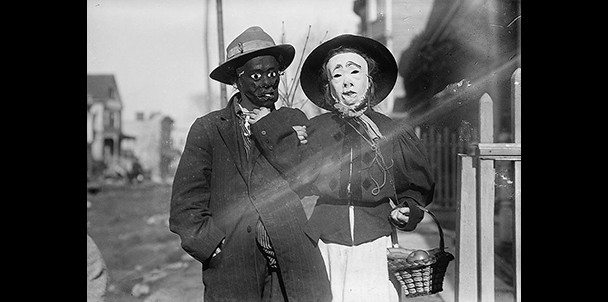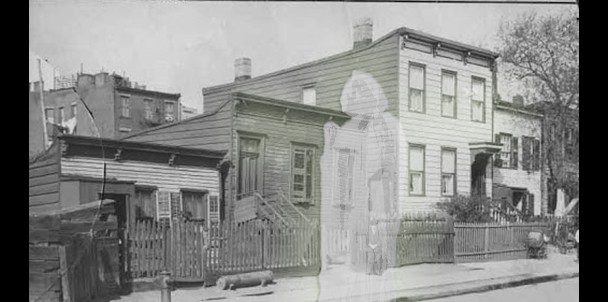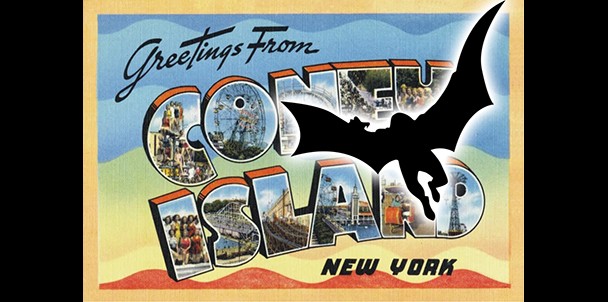I was watching an old episode of “A Haunting” the other day, arguably one of the best television series to have ever been canceled, which centered around formulaic, “evil,” long-forgotten possessions in a dusty attic that were predictably infused with the residual energies of a former property owner. Typical. However, the story did have one redeeming facet that prevented me from phoning it in and going for another can of coke from the fridge: The mother had found an old necklace, which she then gave to her young child. The necklace, like so many others in paranormal story lines, had an indecipherable, worn inscription and was made of some blessed metal or another. In order to rid the house of the spirit, they took this necklace to the cemetery where the offending ghost was originally laid to rest and buried it next to her grave. The hitch to this story was that the two families, the one currently residing in the home and its former owners were of different cultural sets and religious beliefs. Wiccans moved in, took down the crosses, bathed the house in earthy Isis blessings, and woke up with the crosses back where they started.

Sometimes when living in a society that is chronically bored, we can’t be bothered to appreciate what is going on around us. Conceivably, a piece of jewelry is able to be of great significance to a person. If this is the case, under the right circumstances, people and jewelry are inseparable; jewelry then has a human scale, and humans impute meaning to jewelry.It might be hard for some people to think of a piece of jewelry as anything other than a decorative ornament. It again often has a meaning to someone beyond the here and now. This might be something personal, marking an event, a celebration, a loss, or an identity. These meanings can also be universal, part of the code language – shaping society.

In industrial and secular societies, rituals have often lost their meaning. Initial rites of passage have only a hollow semblance of what they once meant, and death and funeral rituals have become standardized. Jewelry is part of a familiar ritual, such as marriage, and it is frequently present in military and other official decorations. What has happened to humans, generally speaking, and social rituals?

- Heartbreak, designed by Tjep, is a little golden hammer and ceramic heart, coated with rubber on the inside. Thus the broken heart expresses the state you are in, while the act of smashing can be felt as a relief.
- Katja Prins’ Bound by Blood brings together and mixes various prayer-necklaces, which only differ in details. A contemporary blood red jewel is created referring to our mutual bond, as well as to blood shed in the name of a religion.
- The Wishbone necklace, designed by Michael Leung, is made of porcelain and, together with a friend, can be broken in half.
- The Kawari Dama by Susan Pietzsch is a string of beads made from colored sugar with lover beads inside. It is intended for pleasure derived from a private ritual, the enjoyment of slowly sucking the beads and the unexpected find of a concealed preciousness.
- In the old days, Catholic children used to have a Madonna medallion pinned on every morning, significant little symbols for protection and remembrance. It is an old, lost ritual that has been revived by Ruudt Peters in his design, Picture Medallion.
- Earth Ring ritualizes our sense of place. Warwick Freeman gives back the bond with the earth beneath our feet.
- Abschiedsfest from Constanze Schreiber is a bracelet and ring, which may put a special meaning on the mourning ritual.
- Wedding Pills, designed by Ted Noten, are golden alternative wedding rings with a traditional inscription with the name of the loved one and the marriage date. They can be taken with a glass of vodka or other beverage. Because of the intimate process these pills undergo, a fundamental question is laid bare: Are we willing to search for them? It may provoke the first marriage crisis. And with whom it agrees, the ritual can be repeated after each crisis – a nice reconciliation ritual.
Anyways, it is not very funny, but it is an interesting thought.
Click here to see the complete collection.



